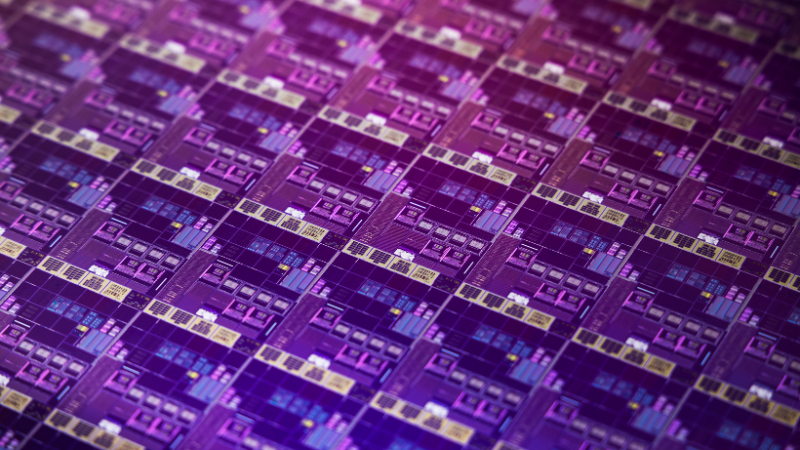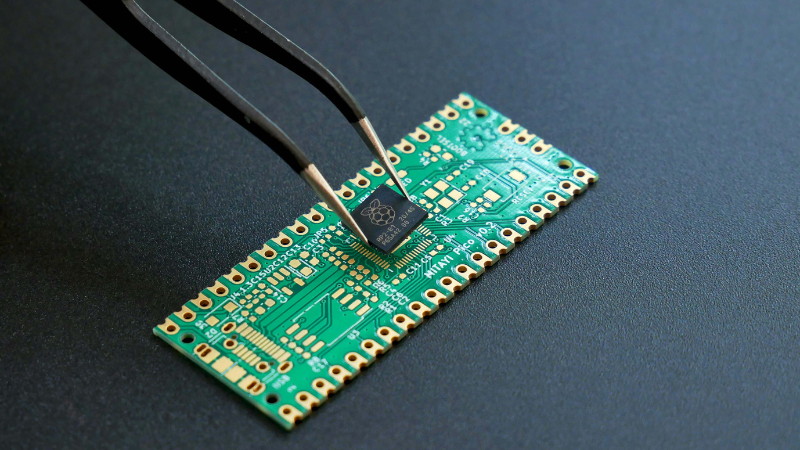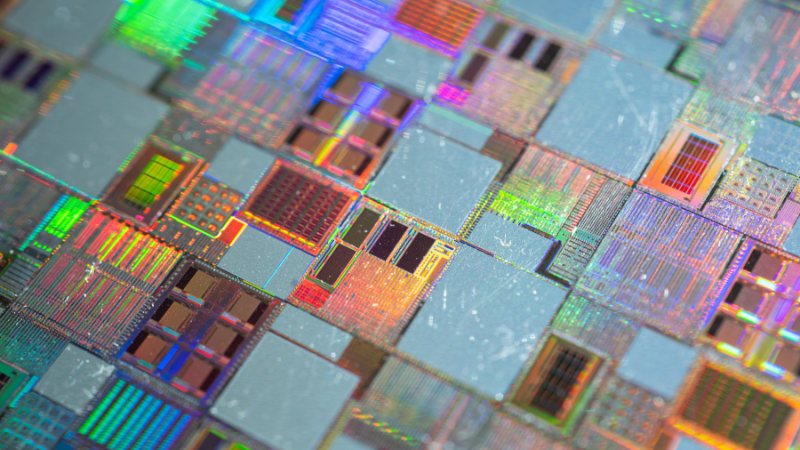
Why Adaptable Skills Are Critical for Semiconductor Jobs
04 Feb, 20258 minutes
Semiconductor jobs and the skills needed to succeed are constantly changing. Demand means that chips must be miniaturized without sacrificing performance or increasing energy consumption, which is no small task. The push for performance has also resulted in other chip design advancements, such as AI-powered high-bandwidth memory and quantum computing.
Wide industry demand and cybersecurity considerations are also why adaptable skills are required in the semiconductor industry. To find out why, continue reading our handy guide!
Miniaturization and Advancements in Semiconductor Chip Design
Guided by Moore’s Law, the concept that the number of transistors on a chip would double every two years, semiconductor chip miniaturization has been a consistent feature. The motivation for miniaturization has resulted in chips at sizes of 14nm to 10nm, 7nm, and 5nm, with a drive to achieve 3nm and 2nm. These are the key elements of miniaturization:
- Smaller Node Sizes: As mentioned, semiconductor fabrication developments have dramatically downsized node sizes. Although smaller, they have more transistors in a concentrated area, allowing for improved processing power and energy efficiency.
- Extreme Ultraviolet Lithography (EUV): This technology creates essential, intricate patterns at smaller scales, allowing miniaturization capabilities that transcend traditional optical lithography.
Other Semiconductor Chip Design Developments
Although the pace of Moore’s Law has declined in recent years, alternative advancements in semiconductor design have not. Let’s take a look at how the industry continues to innovate.
AI-Driven High-Bandwidth Memory (HBM)
Semiconductor manufacturers such as Samsung, SK hynix, and Micron are pioneering bespoke HBM solutions to meet the demands of AI applications. The process involves using stacked Dynamic Random Access Memory (DRAM) chips for high-speed data transfer and reduced power consumption. Here’s an overview of its core features:
- 3D Stacking: HBM leverages tech that enables multiple layers of memory chips to be vertically stacked. This type of design reduces the distance data needs to travel, meaning greater speed and efficiency.
- High bandwidth: With HBM, bandwidth is substantially higher compared to conventional tech like DDR4 or GDDR5. For example, HBM3 provides up to 512 GBps of bandwidth.
- Energy Efficiency: This technology achieves high performance while consuming less power.
- Compact Design: The stacked architecture enables a smaller form factor, ideal for devices with limited space.
HBM in AI applications is becoming increasingly prevalent. To that extent that SK hynix estimates that the demand for HBM memory chips will rise at an annual rate of 82% through 2027.
Advanced Packaging Technologies
These methods are implemented to combine multiple semiconductor chips into one electronic device. These processes promise better performance and reduced power consumption. Let’s take a look at some examples of advanced packaging techniques:
- Hybrid Bonding: New technology that allows ultra-fine interconnecting pitches and high bandwidths.
- 2.5D and 3D Integration: Involves stacking chips vertically or horizontally, meaning higher density and performance.
- Wafer-Level Packaging (WLP): This process packages an integrated circuit while still part of the wafer. This decreases size but increases electrical performance.
- System-in-Package (SiP): A single package containing multiple integrated circuits that function as a system or subsystem.
- Chip-on-Wafer-on-Substrate (CoWoS): TSMC developed this high-density packaging tech for advanced chips.
In 2022, this market was valued at $30.1 billion, and by 2031, it’s forecast to reach $40.3 billion, representing a compound annual growth rate of 5.2%.
Quantum Computing Advancements
Quantum computing and semiconductors are technologies that use one another’s characteristics to continue their development. Here’s how:
Qubits
The fundamental units of quantum information are known as qubits. Semiconductor-based qubits, particularly those that use silicon quantum dots, have the potential for scalability and integration with existing manufacturing processes.
Silicon-Based Quantum Chips
As stated above, silicon is a key material for quantum computing. Its compatibility with current semiconductor manufacturing processes enables scalable quantum chips. This potential has been realized in recent breakthroughs:
- Researchers at the University of Manchester and the University of Melbourne developed ultra-pure silicon that allowed for high-performance qubit devices with enhanced scalability.
- Intel has developed the Horse Ridge II cryogenic chip, simplifying quantum system operations and integrating quantum processors with classical hardware.
Leading companies like IBM, Intel, and Google are investing significantly in semiconductor-based quantum. This is because of the possibilities associated with quantum computing, such as revolutionary AI applications, secure communications, drug discovery, and energy optimization.
For instance, Google’s Willow chip displayed computational capabilities that exceeded those of classical supercomputers. This is just one example illustrating quantum systems' potential for solving complex problems.
Software-Defined Silicon (SDS)
This emerging concept in semiconductor design facilitates the fusion of hardware and software, allowing for improved flexibility and optimization in chip functionality. Ordinarily, software and hardware would be made separately and then integrated. However, software-defined hardware manages this integration early in the design process. Features include the following:
- Flexibility: SDS enables increased programmability by integrating processors with configurable hardware. This trend has gathered pace with the increased availability of gates in programmable logic, meaning embedding processors into ASICS SoCs is simpler.
- Multicore Architecture: SDS architectures regularly incorporate multicore chips that scale to hundreds of processors. They allow concurrent processing, communication, and input-output through the instruction set of the cores and the on-chip interconnect protocol. This design supports several programming techniques, including statically configured process networks, dynamic configuration, and mobile processes.
- Customization: Intel has used its software-defined silicon (SDSi) mechanism in Sapphire Rapids CPUs, enabling or disabling any instruction within the x86 ISA while maintaining compatibility.
- Cost-Effectiveness: Businesses like EdgeQ are promoting a pay-for-what-you-use pricing model. This means organizations can affordably move from 4G to 5G networks by spreading costs for new features.
- Adaptability: In the automotive industry, software-defined vehicles (SDVs) can upgrade functionalities through over-the-air updates and rely more on software to control vehicle systems. This transition is supported by advanced semiconductor technologies, such as wide-bandgap (WBG) materials like silicon carbide (SiC) and gallium nitride (GaN), which perform better than traditional silicon-based components.
Automotive Industry
Linking to the above, the automotive sector is a major contributor to semiconductor demand. This growth is powered by innovations in vehicle electrification, autonomy, and connectivity. Contemporary cars have between 1,000 and 3,500 semiconductors. As consumers choose features that aid vehicle safety, like advanced driver assistance systems or ADAS, this number is forecast to increase.
Communications and Computing
According to a McKinsey report, the computation and data storage market is projected to grow by up to 6% due to the demand for servers to support applications like AI and cloud computing. In the wireless segment, it’s predicted that smartphones will account for a large portion of the expansion, mostly due to the move from lower-tier to mid-tier segments in emerging markets and the growth of 5G technology.
This sector remains a prime consumer of semiconductors. Key applications are:
- Smartphones
- High-performance computing
- IoT Devices
Consumer Electronics
Consumer electronics is one of the main markets for semiconductors. A plethora of products require semiconductor chips, including the following:
- Appliances: Refrigerators, washing machines, and microwaves depend on semiconductors to regulate electricity flow and optimize efficiency.
- Personal Computers: CPUs are central to the functionality of these devices.
- Tablets and Smartphones: These devices rely on chips for communication, processing, memory, and display.
Cybersecurity Considerations
With the industry becoming more interconnected and complex, many challenges mean the need for cybersecurity skills in semiconductor jobs is a pressing matter. Particular measures must be implemented in the following areas.
Protection of Intellectual Property (IP)
Protecting intellectual property - such as technologies, chip designs, manufacturing processes, and advanced materials - is vital for the longevity of the semiconductor industry. Cybersecurity skills are needed for IP protection for several reasons:
- IP Assets: Semiconductors are safeguarded by various forms of intellectual property, including patents, copyrights, trade secrets, and layout designs. Due to their high value, these assets are prime targets for cyberattacks.
- Advanced Threats: As tech evolves, so too do cyber threats. From hardware trojans to reverse engineering and supply chain attacks, cybersecurity skills are pivotal in identifying and mitigating these risks.
- Encryption and Authentication: Sensitive data and designs need protection from encryption and authentication mechanisms.
- Secure Boot and Firmware Integrity: Expertise is essential to securing boot processes, maintaining firmware integrity, and protecting against malware and unauthorized modifications.
Supply Chain Security
Containing over 50 points and one region that holds over 65% of the global market share, the semiconductor supply chain is complex. This concentration creates weak points vulnerable to cyberattacks, natural disasters, or geopolitical conflicts. Here’s why supply chains need protection with cybersecurity:
- Critical Infrastructure Protection: The latest technologies are often redundant without semiconductors. A cyber attack on the supply chain could harm many industries and national security.
- Complex Manufacturing Processes: Semiconductor manufacturing processes require the latest tech, expert knowledge, and heavy capital investment. Cybersecurity skills are needed to ensure these processes are safe from threats that might disrupt production.
Regulatory Compliance
Regulatory compliance can be confusing, even burdensome, but it can’t be escaped. As regulations get more intricate, there’s a greater emphasis on strong cybersecurity skills. Let’s outline reasons why cybersecurity skills are necessary for regulatory compliance:
- Regulatory Complexity: The scale of industry regulations is increasing, meaning expertise is needed. For example, semiconductor companies must factor in export controls and trade compliance, scrutiny from FDI screening, and ESG concerns.
- Safeguarding Assets: As discussed, semiconductor companies work with valuable IP and sensitive customer information. Regulatory measures strengthen defenses.
- National Security Concerns: Stricter regulations are being imposed by governments to bolster the protection of tech and national security.
Final Say: Why Adaptable Skills Are Critical for Semiconductor Jobs
With advanced packaging, quantum computing, and miniaturization, the semiconductor industry is changing in a big way. Multiple industries are driving the demand, such as automotive, consumer electronics, and communications, and each sector means diverse skills are needed.
As technology grows, cybersecurity knowledge has become imperative, ensuring intellectual property protection, supply chain security, and regulatory compliance. It’s evident that professionals must be committed to continuous learning to flourish in semiconductor jobs - not only that, it’s vital for the progression of the industry.
Semiconductor Recruitment Solutions Charging The Industry
If you lack professionals who have the latest semiconductor skills, there’s a high chance your business could lose its competitive edge. Since Acceler8 Talent was established in 2019, we’ve been committed to helping organizations stay sharp in a demanding industry.
Don’t get left behind. Visit our semiconductor recruitment page or contact us today to discover how our experts can support your hiring needs.




